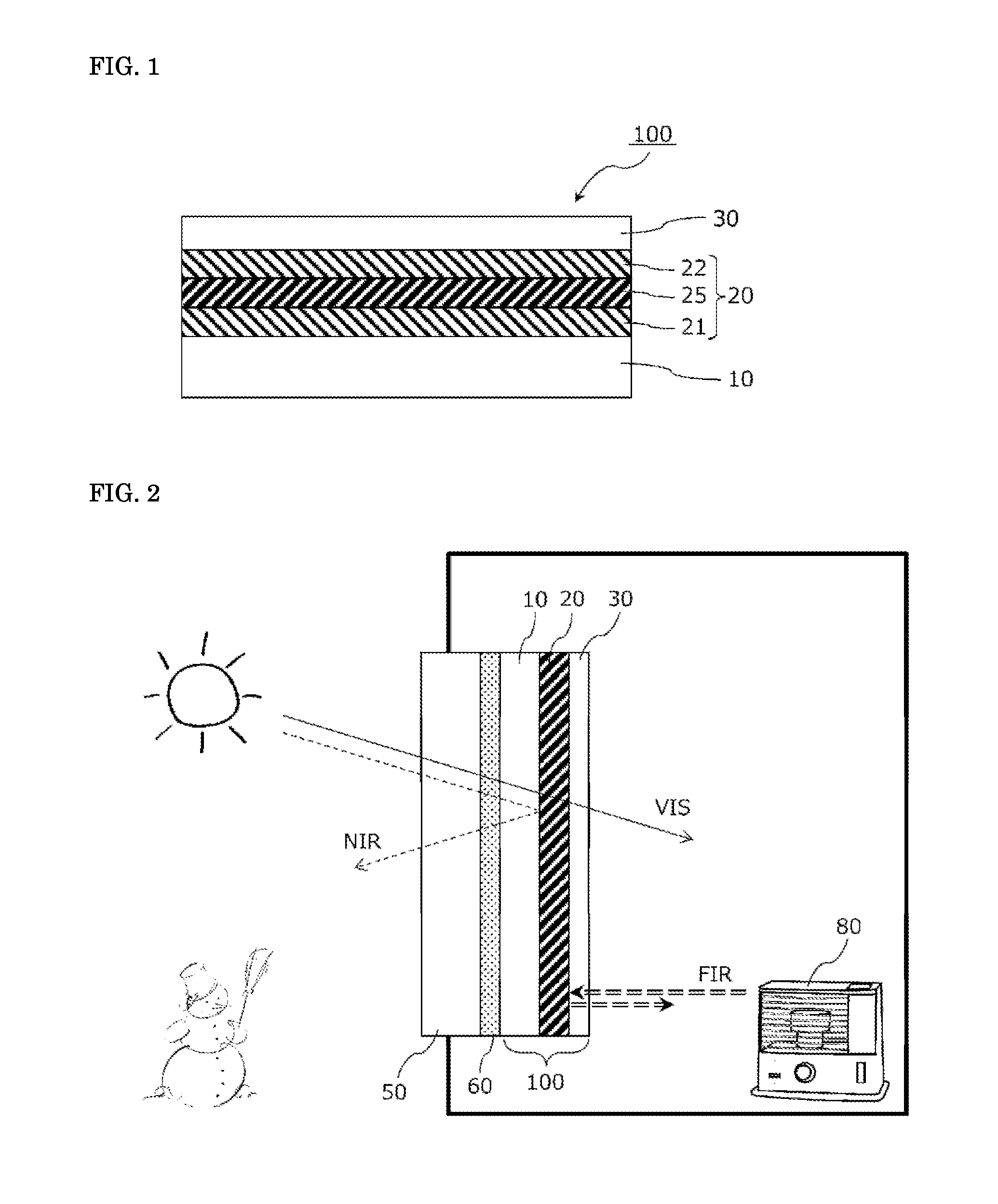Method for producing infrared radiation reflecting film
a technology of infrared radiation and reflecting film, which is applied in the direction of instruments, optical elements, vacuum evaporation coating, etc., can solve the problems of insufficient physical strength of metal oxide layers, increased emissivity, and inability to achieve heat insulating effects, etc., to achieve enhanced adhesion between metal layers and metal oxide layers, the effect of increasing the deposition rate of metal oxide layers and increasing the productivity of infrared reflecting films
- Summary
- Abstract
- Description
- Claims
- Application Information
AI Technical Summary
Benefits of technology
Problems solved by technology
Method used
Image
Examples
example 1
[0114](Formation of Hard Coat Layer on Substrate)
[0115]An acryl-based ultraviolet-curable hard coat layer (manufactured by Nippon Soda Co., Ltd., NH2000G) was formed in a thickness of 2 μm on one surface of a polyethylene terephthalate film (manufactured by Toray Industries Inc., trade name “Lumirror U48”, visible light transmittance 93%) having a thickness of 50 μm. Specifically, a hard coat solution was applied with a gravure coater, dried at 80° C., and irradiated with ultraviolet rays of accumulated light quantity of 300 mJ / cm2 by an ultra high pressure mercury lamp to be cured.
[0116](Formation of Infrared Reflecting Layer)
[0117]An infrared reflecting layer was formed on a hard coat layer of the polyethylene terephthalate film substrate by using a roll-to-roll sputtering apparatus. Specifically, by a DC magnetron sputtering method, a substrate-side metal oxide layer composed of a zinc-tin composite oxide (ZTO) and having a thickness of 30 nm, a metal layer composed of an Ag—Pd a...
examples 2a and 2b
[0120]The amount of gas introduced into the sputtering chamber in deposition of the substrate-side metal oxide layer was changed so that a volume ratio between Ar and O2 is 90:10 (Example 2A) and a volume ratio between Ar and O2 is 95:5 (Example 2B). The amount of Ar gas / O2 gas introduced in deposition of the surface-side metal oxide layer was set so that a volume ratio between Ar and O2 is 98:2 as with Example 1. Infrared reflecting films were prepared in the same manner as in Example 1 except for changing the amount of gas introduced in deposition of the substrate-side metal oxide layer as described above.
example 3
[0121]As the sputtering target for forming the substrate-side metal oxide layer and the surface-side metal oxide layer, a target formed by sintering composition consisting of zinc oxide, tin oxide, and a metal zinc powder at a weight ratio of 19:73:8 was used. In the same manner as in Example 1 except for this, an infrared reflecting film was prepared.
PUM
| Property | Measurement | Unit |
|---|---|---|
| wavelength | aaaaa | aaaaa |
| visible light transmittance | aaaaa | aaaaa |
| thickness | aaaaa | aaaaa |
Abstract
Description
Claims
Application Information
 Login to View More
Login to View More - R&D
- Intellectual Property
- Life Sciences
- Materials
- Tech Scout
- Unparalleled Data Quality
- Higher Quality Content
- 60% Fewer Hallucinations
Browse by: Latest US Patents, China's latest patents, Technical Efficacy Thesaurus, Application Domain, Technology Topic, Popular Technical Reports.
© 2025 PatSnap. All rights reserved.Legal|Privacy policy|Modern Slavery Act Transparency Statement|Sitemap|About US| Contact US: help@patsnap.com



